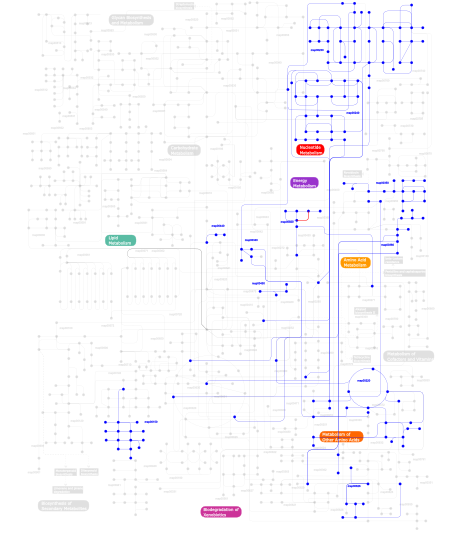The domain within your query sequence starts at position 112 and ends at position 203; the E-value for the PUA domain shown below is 1.96e-4.
GEVIVGAQCGNAVLRGAHVYVPGIVSASKFMKAGDVISVYSDINGKCKKGAKEFDGTKVF LGNGISELSRKDIFNGLPDLKGIGIRMTEPIY
PUAPutative RNA-binding Domain in PseudoUridine synthase and Archaeosine transglycosylase |
|---|
| SMART accession number: | SM00359 |
|---|---|
| Description: | - |
| Interpro abstract (IPR002478): | The PUA (PseudoUridine synthase and Archaeosine transglycosylase) domain was named after the proteins in which it was first found [ (PUBMED:10093218) ]. PUA is a highly conserved RNA-binding motif found in a wide range of archaeal, bacterial and eukaryotic proteins, including enzymes that catalyse tRNA and rRNA post-transcriptional modifications, proteins involved in ribosome biogenesis and translation, as well as in enzymes involved in proline biosynthesis [ (PUBMED:16793063) (PUBMED:16407303) ]. The structures of several PUA-RNA complexes reveal a common RNA recognition surface, but also some versatility in the way in which the motif binds to RNA [ (PUBMED:17803682) ]. PUA motifs are involved in dyskeratosis congenita and cancer, pointing to links between RNA metabolism and human diseases [ (PUBMED:16943774) ]. |
| GO function: | RNA binding (GO:0003723) |
| Family alignment: |
There are 27311 PUA domains in 27309 proteins in SMART's nrdb database.
Click on the following links for more information.
- Evolution (species in which this domain is found)
- Cellular role (predicted cellular role)
- Literature (relevant references for this domain)
- Disease (disease genes where sequence variants are found in this domain)
- Metabolism (metabolic pathways involving proteins which contain this domain)
- Structure (3D structures containing this domain)
- Links (links to other resources describing this domain)












































